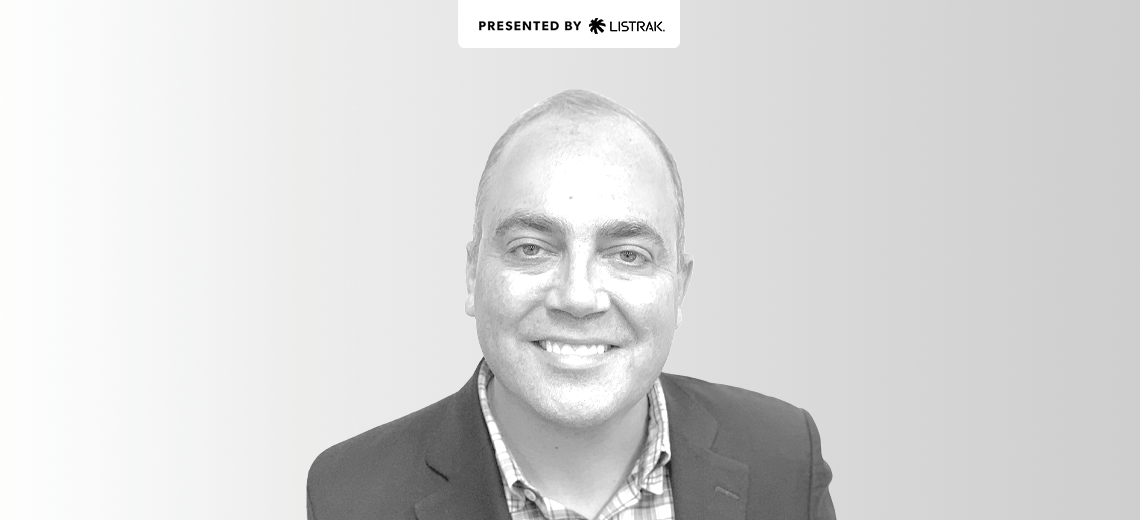This is an episode of the Glossy Fashion Podcast, which features candid conversations about how today’s trends are shaping the future of the fashion industry. More from the series →
Subscribe: Apple Podcasts • Spotify
Matt Kaness has an extensive retail background with a heavy focus on e-commerce, having worked as the CEO of Modcloth and, for eight years, URBN’s chief strategy officer. Since late last year, he’s zeroed in on retail’s booming resale sector, as CEO of the new online marketplace GoodwillFinds.
“We’re a technology venture,” Kansas said on the latest Glossy Podcast, explaining GoodwillFinds’ business model. The company’s tech focus includes building out proprietary tools “for sellers to be able to list [products] quickly, for customer acquisition and retention, and for [partner] Goodwill [store owners], in support of their packing, shipping and outbound logistics.”
What drove Kaness’s interest in running GoodwillFinds was, in part, timing. “Coming out of Covid, the Gen-Z consumer has said that there’s no stigma on secondhand,” he said. “That, coupled with a lot of advancements in technology, has allowed resale to scale profitably.”
GoodwillFinds, itself, has also impressively scaled. According to Kaness, the marketplace is currently attracting value-driven and trend-driven shoppers, with sustainability-driven shoppers being a target demographic. Since its launch, it’s built up an email database of 250,000 subscribers, plus it’s en route to offering 1 million products on its e-commerce site by the end of the year. It has 20 full-time employees, with 20-30 more set to come on board by the end of 2023.
Below are additional highlights from the conversation, which have been lightly edited for clarity.
AI-driven pricing
Ad position: web_incontent_pos1
“First and foremost, AI is being leveraged for pricing. Pricing is probably the biggest hurdle you have to get over in the resale category because everything’s a one-off: [When you have] hundreds of thousands of items, how do you price each individually? You need to leverage technology. AI is very efficient at looking across your catalog and your sales history, coupling that with scraping the web to see where else items are listed that look similar, and then being able to, in real-time, bring recommendations for price and other product detail information. … When we launched, our pricing was all over the place, which we knew is going to happen. But as we’re building these models, and as we’re getting smarter and tapping into what AI can enable, we’re getting better at pricing. There’s also pricing across the catalog. [For example], when do you mark down? When do you promote? What recommendations do you bring into the user experience? Liquidity is probably the most important feature of a marketplace, where you’re matching supply and demand. So as we scale sellers and grow our catalog, and as we acquire customers and grow our house file, we need to make sure that not just the categories that are selling the most and the customers that are buying the most match up, but also that the long tail of customers and items in the catalog match up. AI allows you to leverage those data models to quickly figure out where can we make recommendations or promote product or use pricing action to drive conversion so that we’re continuing to turn over the catalog and drive liquidity.”
Becoming the ultimate brand partner
“If you go to our site right now, we’re selling Nike, Patagonia, Lululemon, Free People, Carhart, Levi’s — some really big, successful brands that people love and that have been around for a long time, so there’s a lot of secondhand product out in the market. And so I can envision a world where we work with brands like those or others, where there is a branded shop on our platform — goodwillfinds.com-backslash-brand name shop — where we curate and pull out, from all of our donations, their branded goods. That way, our consumers can have a branded experience, plus we’re able to work with those brands on the goods that are end-of-life that they want to make sure to dispose of responsibly. They can partner with their local physical Goodwill location and donation center to get those goods put into the same branded shop on our platform. That’s a win for the brand, it’s a win for the customers, and it’s a win for our mission because that will just drive our supply and sales so that we’re able to give back more to those local Goodwills. And then, over time, that will become a playbook for how brands think about end-of-life, where they’re directing their customers or giving them incentives to donate versus to throw away.”
The makings of a great brand
“I’ve learned a couple of things [in my career]. One, great brands have a narrow focus and a wide appeal. And so, mining the customer that you have today — and really, really obsessing about what she and he want, what their feedback is, where they’re begging you to be better, where they’re asking you to do more and just making sure that your execution lines up with those brand promises — is table stakes for me in any enterprise I’m involved in. … But at the same time, you have to make sure that the way you tell the brand story is broad enough to appeal to a big enough market that will allow you to scale as you improve the customer experience, the product that you’re offering and the value that the customer derives. … The second [philosophy] is: Don’t fire the customer you have hoping to acquire a customer you don’t — which is a big misstep I’ve seen a lot of brands and retailers make over the years when they try to do a transformation or they try to grow too quickly.”




